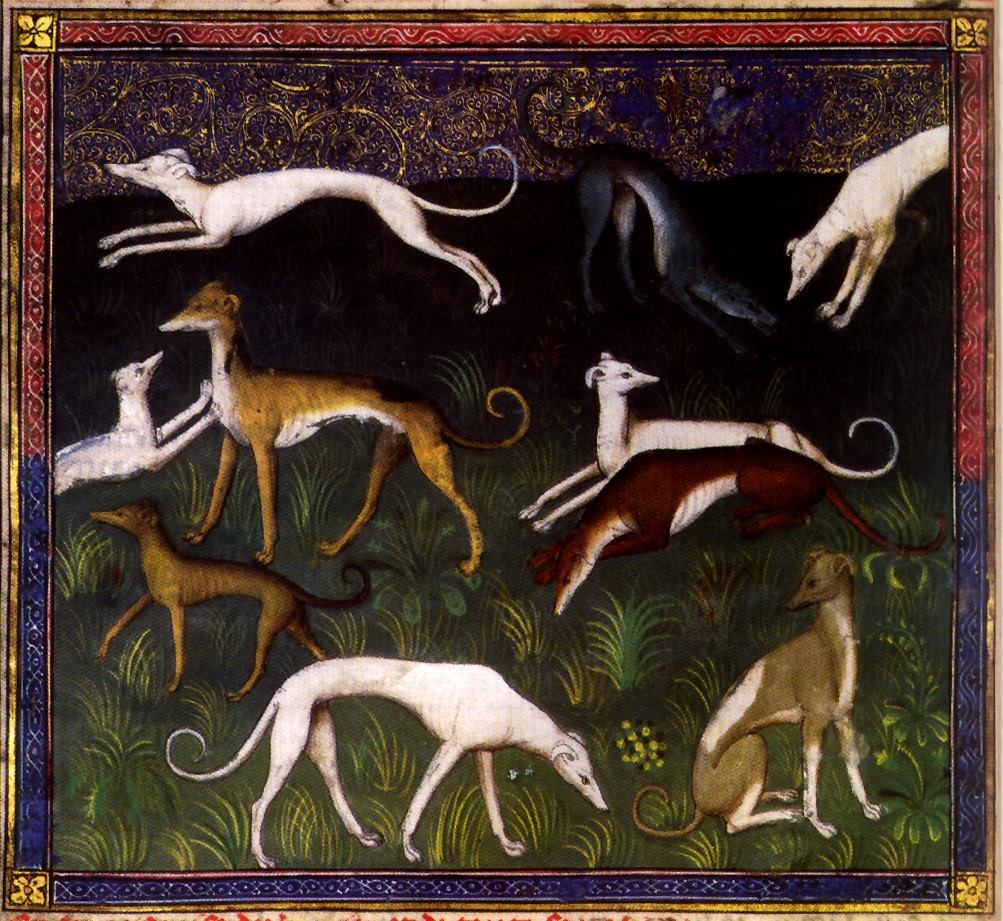
Simply put, the Greyhound breed is old. Really old. Reference is even made to the breed in the Bible by name:
Proverbs 30:29-31 King James Version (KJV)
29 There be three things which go well, yea, four are comely in going:
30 A lion which is strongest among beasts, and turneth not away for any;
31 A greyhound; an he goat also; and a king, against whom there is no rising up.
Agreement about the breed’s origins may end there. Some experts suggest the breed dates back some 4,000 years to the kingdoms of Egypt, Greece and Persia, and artwork would support this, while others, i.e., John Henry Walsh writing under the pseudonym “Stonehenge,” made a case in 1853 for the breed having a Celtic origin. The parent club, meanwhile, states that Greyhounds probably originated in the eastern Mediterranean region.
In 1997, a genetic study called, “Multiple and Ancient Origins of the Domestic Dog” traced the breed’s mitochondrial DNA. In 2004, the findings of another study, “Genetic Structure of the Purebred Domestic Dog” that used Single Nucleotide Polymorphisms showed that the Greyhound shared commonalities with breeds that originated within the influence of Celtic culture in Europe.
We honestly don’t know and leave it to the breed experts to share with us their understanding of the breed’s earliest origins.
We do know that in the Middle Ages, Greyhounds were saved from extinction during times of famine by clergymen who protected them and bred them for the nobility. From this point on, they came to be considered the dogs of the aristocracy and the killing of a Greyhound was punishable by death. Old paintings and tapestries of hunting feasts often include Greyhounds.
William Shakespeare mentioned Greyhounds in a number of his plays, i.e., Henry V Henry’s speech to his troops just before the Battle of Harfleur that compared people to coursing Greyhounds:
I see you stand like greyhounds in the slips,
Straining upon the start.
The game’s afoot.
By the 19th century, Greyhounds were routinely seen with royalty and the aristocracy of England in the nineteenth century (“Eos” was the pet Greyhound of Queen Victoria’s beloved husband, Albert) while the breed was being imported to North America to rid farms of an epidemic of jackrabbits. The US cavalry used Greyhounds as scouts, and General George Custer was said to have taken his Greyhounds with him when he traveled, including the day before the Battle of Little Big Horn.
Image: Early tapestry
